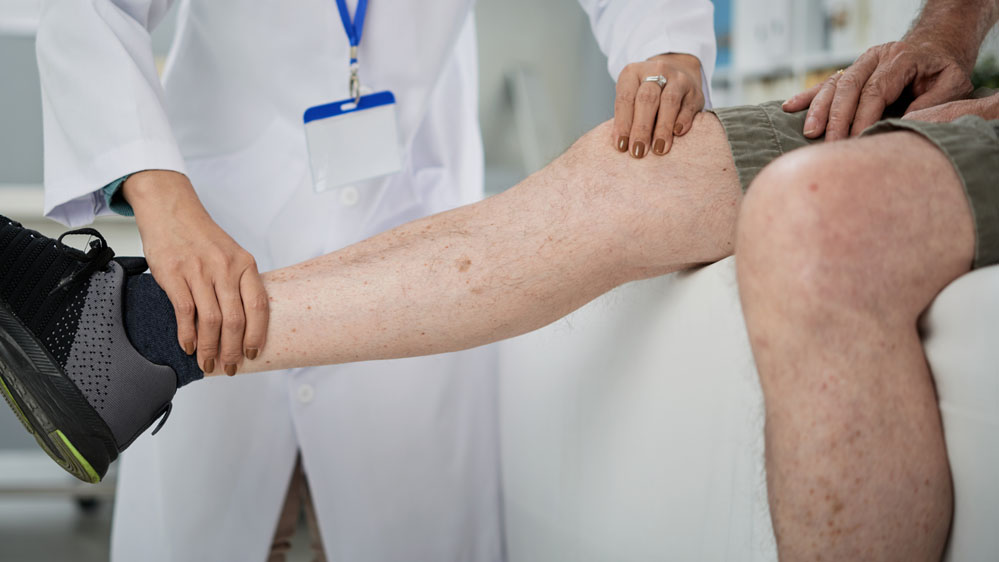Peripheral Artery Disease
Peripheral artery disease (PAD) disrupts your heart’s ability to move blood throughout your body. It is caused by atherosclerosis, a buildup of fatty deposits in the arteries, and smoking is one of the leading risk factors — which means that early detection and lifestyle changes can go a long way toward preventing serious complications.
The board-certified vascular surgeons at Beaufort Memorial are committed to helping prevent and treat PAD.
Call 843-985-2870 to make an appointment or find a vascular surgeon who can help.

What Is Peripheral Artery Disease?
PAD is a form of peripheral vascular disease (PVD), a condition that affects any blood vessel outside of your heart. PAD affects arteries specifically, while PVD can affect veins and other types of blood vessels.
PAD occurs when a buildup of plaque leads to blocked or narrowed arteries, most commonly in the legs. This limits the blood and oxygen flow to the legs and feet. PAD can cause blood clots to form, increasing the risk of heart attack and stroke. Left untreated, it can lead to open sores developing on the legs and feet.
Those sores can evolve into gangrene, or the death of body tissue, and require leg or foot amputation.
Many people with PAD don’t exhibit any signs and symptoms of the condition. However, its most common symptom is leg pain and cramps that occur when walking or climbing stairs and disappear at rest. This is known as intermittent claudication and can affect your calves, feet, thighs, buttocks or hip muscles.
Because risk of PAD increases with age, many adults associate these problems with getting older, and PAD often goes undiagnosed.
Smoking is a primary risk factor for PAD, but other health conditions can put you at increased risk, including:
- Diabetes
- High blood pressure
- High cholesterol
- Kidney failure
- Obesity
Tests for Peripheral Artery Disease
Diagnosing PAD is fairly basic. Your provider will ask you about your medical history, any symptoms you may be experiencing and whether any family members have had PAD. He or she will also conduct some diagnostic tests:
- Ankle-brachial index: This test compares the blood pressure in your ankle to the blood pressure in your arm. You may walk on a treadmill and have readings taken before and immediately after exercising to capture the severity of the narrowed arteries during walking.
- Angiography: This form of imaging allows your doctor to view blood flow through your arteries. Angiography can be done using X-ray, MRI or CT.
- Ultrasound: This test checks for an aneurysm of the aorta or blood vessels using sound waves, which create pictures of how blood flows through your arteries. This can be combined with walking on a treadmill.
People with PAD are at risk of heart attack and stroke, so your provider may also recommend the following tests:
- Electrocardiogram (ECG or EKG): This test records the electrical activity of the heart, shows abnormal rhythms (arrhythmias), and detects heart muscle damage.
- Blood tests:These simple tests measure cholesterol and other markers for heart disease.
Treatment for Peripheral Artery Disease
Early treatment of PAD can help reduce leg pain as well as your risk of heart attack and stroke. At Beaufort Memorial, our team will work closely with you to create an individualized treatment plan, which may include one or a combination of the following:
- Long-term lifestyle changes to help you quit smoking, control blood pressure and cholesterol levels, manage diabetes, and lose weight
- Medications, if necessary, to control risk factors and prevent the formation of blood clots
- Surgery, if necessary, to restore blood flow
